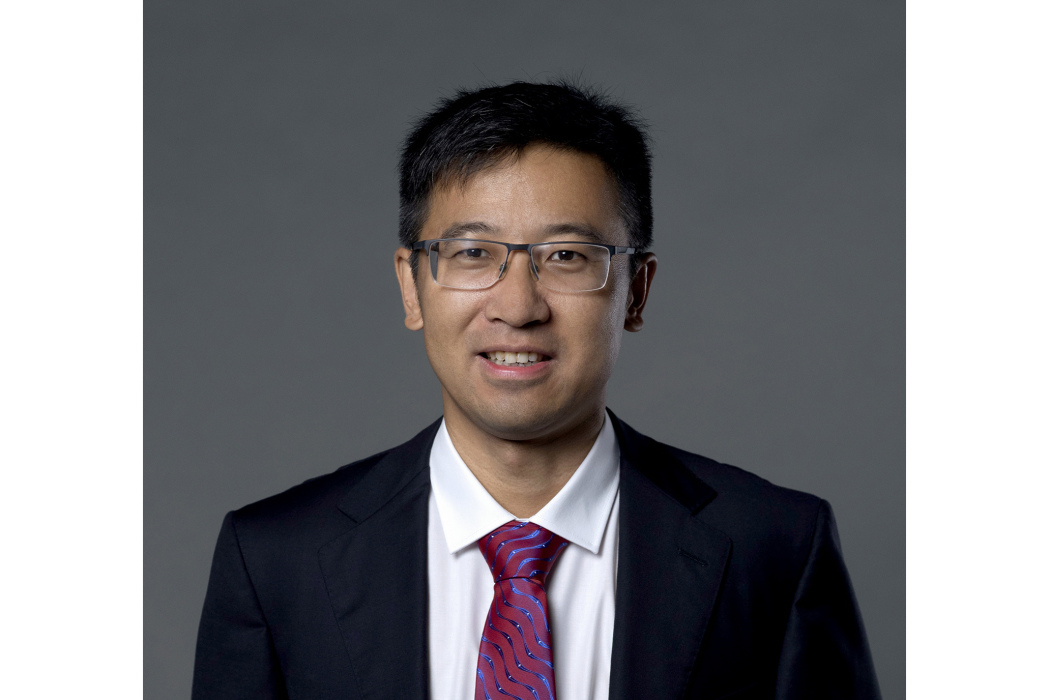人物經歷
2012-2020年先後於中國科學院生物物理研究所、哈佛醫學院及St. Jude兒童醫院從事博士後研究;
2020年秋加入西湖大學生命科學學院組建相分離與生物分子凝聚體實驗室。
研究方向
一、液-液相分離(LLPS)與生物分子凝聚體(Biomolecular Condensates)
細胞的區域化(compartmentalization)是細胞的一個典型特徵。典型的有膜細胞器包括線粒體,溶酶體等;而典型的無膜細胞器包括核仁,應激顆粒(stress granule)等。許多無膜細胞器又被稱為生物分子凝聚體,而其形成機制暫不清楚。過去幾年的研究將液-液相分離的概念引入生物系統,採用生物化學與生物物理學的手段來解釋生物分子凝聚體的形成,加深了對其組裝與功能的認識。RNP顆粒是廣泛存在於細胞內的一大類生物分子凝聚體,楊博士在博士後期間的工作闡述了應激顆粒組裝的關鍵蛋白及其相分離機制,該工作不僅增進了人們對應激顆粒的認識,而且建立了一套研究分子凝聚體的指導框架(Cell, 2020)。
二、生物分子凝聚體與人類疾病
過去幾年的研究不僅揭示了相分離在生理條件下生物分子凝聚體形成中的重要性,而且為研究各種人類疾病,尤其是神經退行疾病提供了新思路。包括阿爾茨海默病,帕金森病,漸凍症(ALS)等在內的神經退行疾病的一個典型特徵是相關致病蛋白的聚集,相分離過程可能參與了疾病發生的各個階段。尋找參與相變的核心組分並研究其發生相變的分子機制,將為疾病治療提供新的干預手段。生物分子凝聚體實驗室未來將綜合運用生物化學、分子生物學、細胞生物學及生物物理學的方法對生理與病理相關的生物分子凝聚體的形成機制與生理/病理功能展開研究,並基於對相關生物分子聚集體的認識設計與開發新的化學干預手段。
代表論文
1. Peiguo Yang*, Cécile Mathieu*, Regina M. Kolaitis, Peipei Zhang, James Messing, Ugur Yurtsever, Zemin Yang, Jinjun Wu, Yuxin Li, Qingfei Pan, Jiyang Yu, Erik W. Martin, Tanja Mittag, Hong Joo Kim, J. Paul Taylor. G3BP1 is a tunable switch that triggers phase separation to assemble stress granules. Cell 2020; 181: 325-345 (*equal contribution)
2. Cristina Batlle, Peiguo Yang, Maura Coughlin, James Messing, Mireia Pesarrodona, Elzbieta Szulc, Xavier Salvatella, Hong Joo Kim, J. Paul Taylor and Salvador Ventura. hnRNPDL phase separation is regulated by alternative splicing and disease-causing mutations accelerate its aggregation. Cell reports 2020; 30:1117–1128.
3. Peipei Zhang, Baochang Fan, Peiguo Yang, Jamshid Temirov, James Messing, Hong Joo Kim, J Paul Taylor. Chronic optogenetic induction of stress granules is cytotoxic and reveals the evolution of ALS-FTD pathology. eLife 2019;8:e39578
4. Yubing Liu, Wei Zou, Peiguo Yang, Li Wang, Yan Ma, Hong Zhang, Xiaochen Wang. Autophagy-dependent ribosomal RNA degradation is essential for maintaining nucleotide homeostasis during C. elegans development. eLife 2018;7:e36588
5. Ke Zhang, Gavin Daigle, Kathleen M. Cunningham, Alyssa N. Coyne, Kai Ruan, Jonathan C. Grima, Kelly E. Bowen, Harsh Wadhwa, Peiguo Yang, Frank Rigo, J. Paul Taylor, Aaron D. Gitler, Jeffrey D. Rothstein and Thomas E. Lloyd. Stress Granule Assembly Disrupts Nucleocytoplasmic Transport. Cell 2018; 173: 958-971.
6. Tommaso Poggioli*, Ana Vujic*, Peiguo Yang, Claudio Macias-Trevino, Aysu N Uygur, Francesco S Loffredo, James R Pancoast, Miook Cho, Jill Goldstein, Rachel M Tandias, Emilia Gonzalez, Ryan G Walker, Thomas B Thompson, Amy J Wagers, Yick W Fong, Richard T Lee. Circulating Growth Differentiation Factor 11/8 Levels Decline with Age. Circ. Res 2015; 7442: 467-73. (*co-first author)
7. Peiguo Yang, Hong Zhang. You are what you eat: multifaceted functions of autophagy during C. elegans development. Cell Res 2014; 24: 80-91
8. Sihui Li*, Peiguo Yang*, E Tian, Hong Zhang. Arginine methylation regulates association of the cargo/receptor complex with the scaffold protein in the autophagy pathway. Mol. Cell 2013; 52: 421-33. (*co-first author)
9. Long Lin, Peiguo Yang, Xinxin Huang, Qun Lu, Hui Zhang, Hong Zhang. The scaffold protein EPG-7 links cargo/receptor complexes with the autophagic assembly machinery. J Cell Biol 2013; 201:113-129.
10. Qianqian Liang, Peiguo Yang, E Tian, Jinghua Han, Hong Zhang. The C. elegans ATG101 homolog EPG-9 directly interacts with EPG-1/Atg13 and is essential for autophagy. Autophagy 2012; 8:1426-33.
11. Yinyan Sun*, Peiguo Yang*, Yuxia Zhang*, Xin Bao, Jun Li, Wenru Hou, Xiangyu Yao, Jinghua Han, Hong Zhang. A genome-wide RNAi screen identifies genes regulating the formation of P bodies in C. elegans and their functions in NMD and RNAi. Protein Cell 2011; 2:918-39. (*co-first author)
12. Qun Lu, Peiguo Yang, Xinxin Huang, Wanqiu Hu, Bin Guo, Fan Wu, Long Lin, Attila L. Kovács, Li Yu, Hong Zhang. The WD40 repeat PtdIns(3)P-binding protein EPG-6 regulates progression of omegasomes to autophagosomes. Dev Cell 2011; 21:343-357.
13. Peiguo Yang, Hong Zhang. The coiled-coil domain protein EPG-8 plays an essential role in the autophagy pathway in C. elegans. Autophagy 2011; 7: 159-65.
14. Ye Tian, Haiyan Ren, Yu Zhao, Qun Lu, Xinxin Huang, Peiguo Yang, Hong Zhang. Four metazoan autophagy genes regulate cargo recognition, autophagosome formation and autolysosomal degradation. Autophagy 2010; 6:984-5.
15. Ye Tian*, Zhipeng Li*, Wanqiu Hu*, Haiyan Ren*, E Tian, Yu Zhao, Qun Lu, Xinxin Huang, Peiguo Yang, Xin Li, Xiaochen Wang, Attila L. Kova ́cs, Li Yu, Hong Zhang. C. elegans Screen Identifies Autophagy Genes Specific to Multicellular Organisms. Cell 2010; 141:1042-55. (*co-first author)
16. Yuxia Zhang*, Libo Yan*, Zhi Zhou*, Peiguo Yang*, E Tian, Kai Zhang, Yu Zhao, Zhipeng Li, Bing Song, Jinghua Han, Long Miao, Hong Zhang. SEPA-1 mediates the specific recognition and degradation of P granule components by autophagy in C. elegans. Cell 2009; 136:308-21. (*co-first author)

